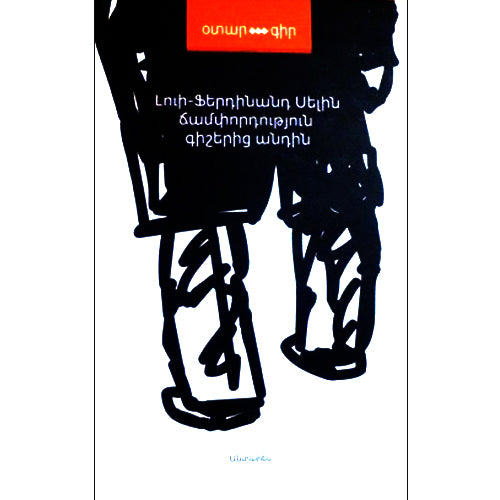Description
Journey to the End of the Night
Journey to the End of the Night
Author: Louis-Ferdinand Céline
Céline's writings are examples of black comedy, where unfortunate and often terrible things are described humorously. While his writing is often hyper-real and its polemic qualities can often be startling, his chief strength lies in his ability to discredit almost everything and yet not lose a sense of enraged humanity. Pessimism pervades Céline's fiction as his characters sense failure, anxiety, nihilism, and inertia. Will Self has described Céline's work as an "invective, which – despite the reputation he would later earn as a rabid antisemite – is aimed against all classes and races of people with indiscriminate abandon". The narrative of betrayal and exploitation, both real and imagined, corresponds with his personal life. His two truest loves, his wife, Lucette Almanzor, and his cat, Bébert, are always mentioned with kindness and warmth.
Journey to the End of the Night (Voyage au bout de la nuit, 1932) is the first novel of Louis-Ferdinand Céline. This semi-autobiographical work describes antihero Ferdinand Bardamu.
Bardamu is involved with World War I, colonial Africa, and post–World War I United States (where he works for the Ford Motor Company), returning in the second half of the work to France, where he becomes a medical doctor and establishes a practice in a poor Paris suburb, the fictional La Garenne-Rancy. The novel also satirizes the medical profession and the vocation of scientific research. The disparate elements of the work are linked together by recurrent encounters with Léon Robinson, a hapless character whose experiences parallel, to some extent, those of Bardamu.
<
| Author(s) | Louis-Ferdinand Céline |
| Translator(s) | Nvard Vardanyan |
| Language(s) | Armenian |
| Publisher(s) | Antares |
| Year | 2015 |
| Pages | 744 |
| Binding | hardcover |
| Printing | Black & White |
| Size | 12 x 20 cm |
| ISBN | 9789939517926 |

